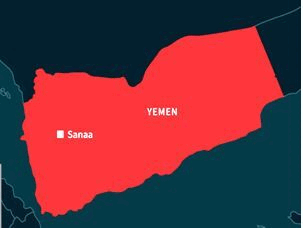PREVALENCE OF INTESTINAL PARASITES, MALNUTRITION, ANEMIA AND THEIR RISK FACTORS AMONG ORPHANED CHILDREN IN SANA'A CITY, YEMEN
Keywords:
Anemia, children, intestinal parasites, malnutrition, Orphanage Sana'a, prevalenceAbstract
Background: Intestinal parasites infection, malnutrition, and anemia are endemic among children living inpoor and developing low-income countries, particularly Yemen.
Aims: The current study aims to determine the prevalence of intestinal parasites, malnutrition, and anemia and their risk factors among orphaned children in Sana'a city, Yemen.
Methods: A cross-sectional study was conducted in the orphanage between September 2020 and November 2023. One hundred and ninety-five (195) stool and blood samples were collected from orphan children aged 7-15 years. Intestinal parasites were examined using the formal ether concentration technique and hemoglobin was assessed using a Sysmex hematology analyzer.
Result: Out of 195 specimens, 77(39.49%) were positive for parasite infection. The high rate of infections was among subjects aged between 10-12 years (43.9%), at primary schools (42.9%), didn’t have a history of parasite infection (48.9%), between 102-118 cms in height (48.6%), 11-30 kg in weight (49.4%), and underweight (40.1%) non-statistical differences (P > 0.05). The most predominant parasite was Entamoeba histolytica (17.4%), followed by Giardia lamblia (10.3%), Hymenolepis nana (6.2%), Ascaris lumbricoides (3.6%), and Enterobius vermicularis (3.6%). The prevalence of anemia was 19% and statistically significant with parasitic infection (P = 0.000) but not significantly to risk factors (P> 0.05).
Conclusion: There is a high prevalence of intestinal parasites, anemia and malnutrition among the participating children, and this affects their health and life. Therefore, the implementation of control and prevention programs including improvement of health status, regular deworming practices with medication, health education, provision of appropriate food, and iron supplementation is required to reduce the incidence of malnutrition and anemia associated with intestinal parasitic infection.

Peer Review History:
Received: 9 February 2023; Revised: 13 March; Accepted: 25 April 2023, Available online: 15 May 2023
Academic Editor: Dr. Emmanuel O. Olorunsola , Department of Pharmaceutics & Pharmaceutical Technology, University of Uyo, Nigeria, olorunsolaeo@yahoo.com
, Department of Pharmaceutics & Pharmaceutical Technology, University of Uyo, Nigeria, olorunsolaeo@yahoo.com
Reviewers:
 Dr. Bilge Ahsen KARA, Ankara Gazi Mustafa Kemal Hospital, Turkey, ahsndkyc@gmail.com
Dr. Bilge Ahsen KARA, Ankara Gazi Mustafa Kemal Hospital, Turkey, ahsndkyc@gmail.com
 Prof. Hassan A.H. Al-Shamahy, Sana'a University, Yemen, shmahe@yemen.net.ye
Prof. Hassan A.H. Al-Shamahy, Sana'a University, Yemen, shmahe@yemen.net.ye
Downloads

Published
How to Cite
Issue
Section

This work is licensed under a Creative Commons Attribution-NonCommercial 4.0 International License.









 .
.